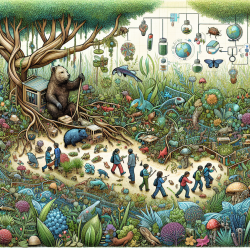The natural world offers a treasure trove of insights that can be applied to various fields, including special education. The research article "Microhabitat Locality Allows Multi-Species Coexistence in Terrestrial Plant Communities" provides a fascinating look at how diverse plant species coexist by utilizing unique microhabitats. This concept can be translated into the classroom to enhance diversity and inclusion. By understanding and implementing these principles, educators can create an environment where every student thrives.
The Concept of Microhabitats
The study conducted by Tubay et al. (2015) demonstrates that plant species coexist by occupying distinct microhabitats, which reduce competition and promote diversity. Each species has specific needs and thrives in particular conditions. In the classroom, this translates to recognizing that each student has unique strengths, needs, and learning styles.
Just as plants require specific conditions to flourish, students benefit from personalized learning environments. By acknowledging and catering to these individual differences, educators can foster an inclusive atmosphere where all students feel valued and supported.
Applying Nature's Lessons to Special Education
- Differentiated Instruction: Tailor teaching methods to accommodate diverse learning styles. Just as different plants require various nutrients and sunlight levels, students need customized teaching approaches to meet their unique needs.
- Create Inclusive Spaces: Design classrooms that offer a variety of learning environments. This could include quiet areas for focused work or collaborative spaces for group activities, mirroring the diverse habitats found in nature.
- Nurture Individual Strengths: Identify and build upon each student's strengths. Like plants that thrive in specific microhabitats, students excel when their abilities are recognized and nurtured.
The Role of Educators as Facilitators
Educators play a crucial role in facilitating an inclusive environment. By adopting a mindset inspired by nature's diversity, teachers can become facilitators who guide students through personalized learning paths. This approach not only supports academic growth but also promotes social-emotional development.
The research highlights the importance of spatial heterogeneity and niche differentiation in promoting coexistence among species. Similarly, educators should strive to create a classroom ecosystem where differences are celebrated and every student has the opportunity to succeed.
The Call to Action for Practitioners
This research invites practitioners to explore further how concepts from ecology can be applied to education. By embracing diversity and fostering an inclusive environment, educators can ensure that all students have the opportunity to reach their full potential.
Microhabitat locality allows multi-species coexistence in terrestrial plant communities










